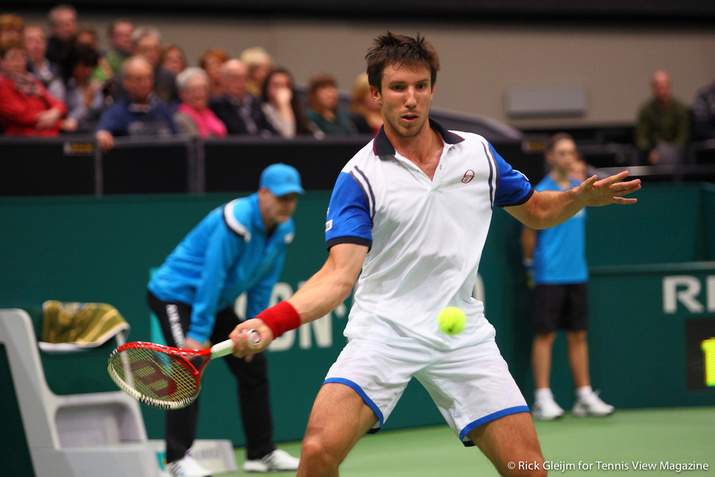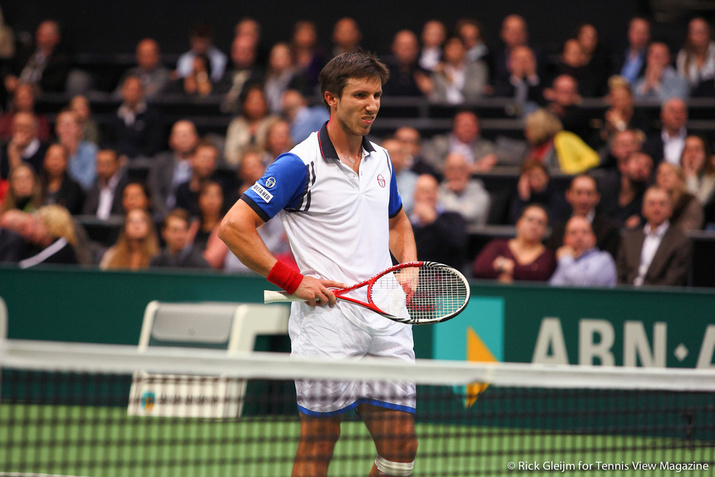Don't miss any stories → Follow Tennis View
FollowWhy Rotterdam Could Launch Igor Sijsling's Career
When making a list of up-and-coming tennis players, Igor Sijsling is rarely a name that you see. The Dutchman first reached the top 200 at the age of 22—a full five years after he officially became a professional. Since then, Sijsling has been a decent Challenger-level player. He could hold his own against similarly-ranked players, but he was by no means a standout.
It was hard to see Sijsling succeeding at the ATP level. That is, until last week. In front of a friendly home crowd at the ATP 500 event in Rotterdam, Sijsling unleashed some beautiful attacking tennis for all the world to see. He was calm, and he was consistent. Mostly, though, he just pounded the ball. Sijsling blasted winners from both wings against superior players like Mikhail Youzhny, Philipp Kohlschreiber, and Marin Cilic.

So where did this Sijsling come from? It’s hard to say. Usually, when you watch rising Challenger players, you can see where their potential is. You can see that they have the tools to be competitive at the higher levels but that they need the consistency or to add little bits to their game to get there. Sijsling was never like that. He always had power, and he always utilized the serve-and-volley with a bit of effectiveness. But we never saw this offensive explosion in Rotterdam coming.
That said, Sijsling has been slowly but surely becoming more consistent over the past few years. His ranking has been steadily moving upwards since the end of 2012. His first real breakthrough came at the US Open that year, where he won his first-ever Grand Slam match after successfully qualifying for the tournament. Those points, plus some good Challenger results in the preceding months and winning a match in Bercy in November, allowed Sijsling to compete almost exclusively on the main tour in 2013.
2013 was a good year for Sijsling. He upset Jo-Wilfried Tsonga in Rotterdam, Jurgen Melzer in Memphis, and Philipp Kohlschreiber in Dusseldorf. His best achievement so far—and the one that should have begun to catch our eyes—was when he reached the third round at Wimbledon, upsetting Milos Raonic along the way.
One of Sijsling’s most impressive traits is his willingness to compete and fight at the lower edges of the main tour. Instead of settling for playing Challengers to try and grab some (relatively) easier ranking points, Sijsling is willing to qualify and face tough draws in ATP 250 events. It is not something you always see from players ranked in the 70-100 range, but it is always refreshing to note.

Now, though, Sijsling is at an important crossroads. He is on the cusp of the top 50, and the points he earned in Rotterdam should help keep him well within the top 70 for the next year as long as he has a modicum of success. He should get direct entry to most 500s and Grand Slams for the next 12 months, although he may still have to qualify for Masters 1000 events. Sijsling is not playing this week, but he will compete in the next three tournaments in Dubai, Miami, and Indian Wells. Those surfaces should suit him, and he will be coming in with more confidence than ever before in his career.
If Sijsling can back up his Rotterdam result, he could make himself into a top-30 mainstay for months and years to come.










